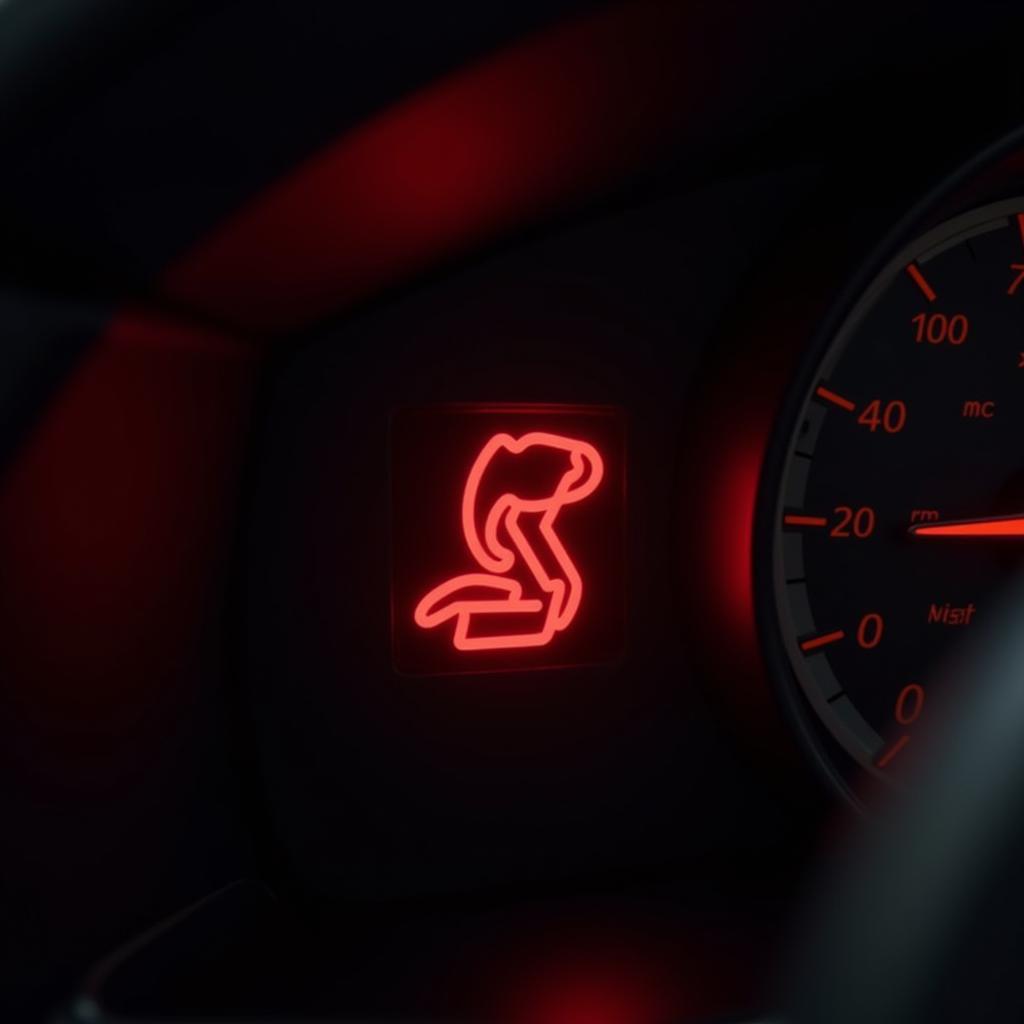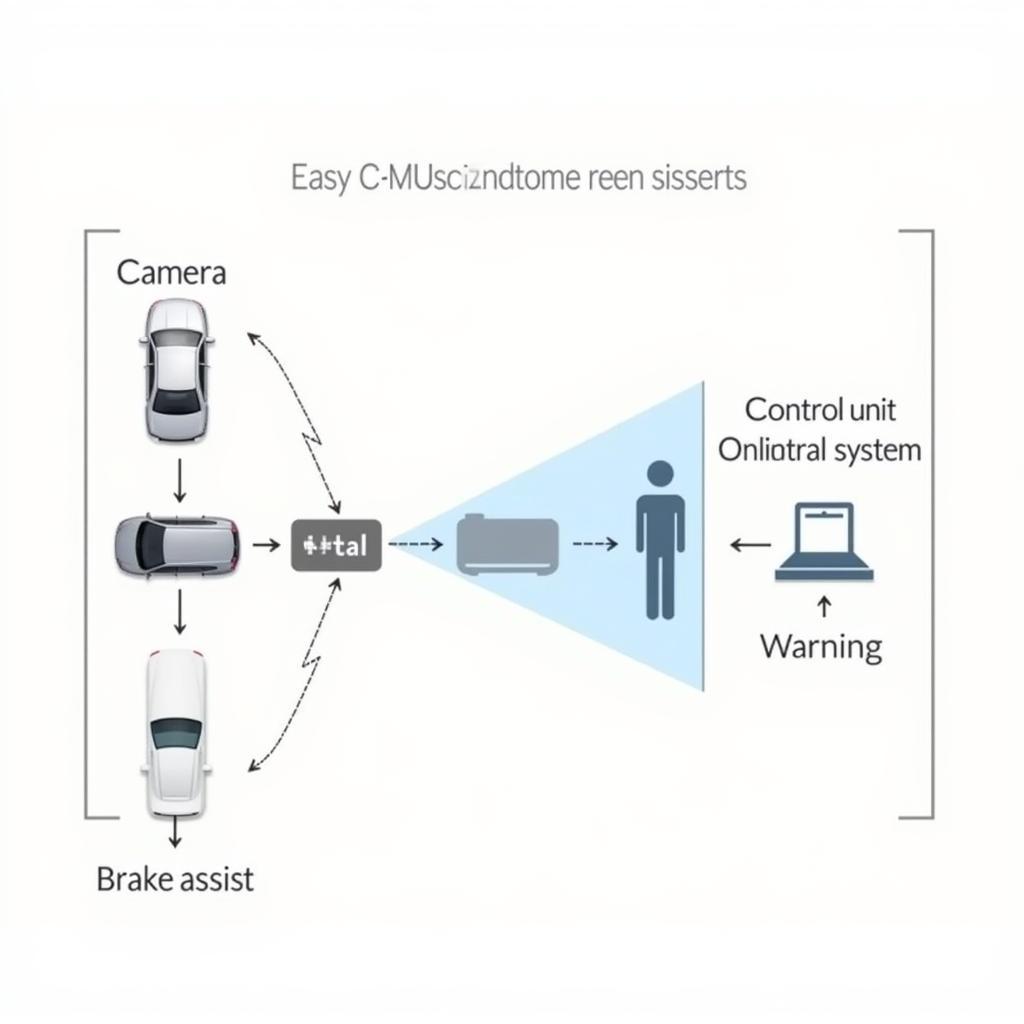The brake light is one of the most important safety features in your vehicle. Understanding what does the brake light warn you about can be crucial to maintaining your safety and preventing costly repairs. Ignoring a brake warning light can lead to serious problems, putting you and other drivers at risk. This comprehensive guide will delve into the various reasons why your brake light might illuminate and offer solutions to help you address the underlying issue.
Similar to the information provided in the bmw 1 series low brake fluid warning light, low brake fluid is a common cause for the brake warning light to come on.
Common Reasons for the Brake Warning Light
The brake warning light can illuminate for a variety of reasons, ranging from simple issues to more complex problems. Here’s a breakdown of some common culprits:
- Low Brake Fluid: This is the most frequent cause. A low brake fluid level could indicate a leak in your brake system, which requires immediate attention.
- Worn Brake Pads: Brake pads are designed to wear down over time. When they reach a certain point, the brake warning light will activate, reminding you to replace them.
- Faulty Brake Sensor: Sometimes, the sensor itself can malfunction, triggering the warning light even if there’s no actual problem with the brake system.
- Parking Brake Engaged: It might seem obvious, but sometimes the warning light simply means your parking brake is still on.
- ABS Issue: A problem with the Anti-lock Braking System (ABS) can also trigger the warning light. This often requires a professional diagnosis.
 Brake Warning Light Illuminated on Dashboard
Brake Warning Light Illuminated on Dashboard
Troubleshooting Your Brake Warning Light
If your brake light comes on, don’t panic. Follow these steps to troubleshoot the issue:
- Check the Parking Brake: Ensure the parking brake is fully disengaged.
- Inspect Brake Fluid Level: Locate the brake fluid reservoir and check the fluid level. If it’s low, add brake fluid and check for leaks.
- Examine Brake Pads: If you’re mechanically inclined, you can inspect the brake pads for wear. If they look thin, it’s time for a replacement.
- Seek Professional Help: If you’re unsure about the cause or can’t fix it yourself, take your vehicle to a qualified mechanic for a proper diagnosis and repair. Understanding specific brake light issues, like the one discussed in brake system warning light on ford escape, can be helpful in addressing similar problems in your own vehicle.
What if My Brake Light Flashes Intermittently?
A flashing brake light can be even more concerning than a steady one. It could indicate a more serious issue with the ABS or other components. Do not delay getting your vehicle checked by a professional. Similar problems can occur in various car models, like the honda civic brake warning light, which emphasizes the importance of a timely diagnosis.
Preventing Brake Light Issues
Regular maintenance is key to preventing brake problems. This includes:
- Routine Brake Inspections: Have your brakes checked regularly as part of your vehicle’s scheduled maintenance.
- Timely Brake Pad Replacement: Replace brake pads before they wear down completely to avoid damage to the rotors.
- Brake Fluid Flushes: Regular brake fluid flushes help maintain the integrity of the brake system. Just like tapping your brakes lightly to warn other vehicles, mentioned in tap your brakes lightly to warn the vehicle, regular maintenance is a proactive safety measure.
What Should I do if My Brake Light Comes On While Driving?
If your brake light comes on while driving, safely pull over as soon as possible. Check your parking brake and brake fluid level. If the problem persists, do not continue driving. Call a tow truck or a trusted mechanic. Understanding the severity of different brake warnings, such as the audi a6 red brake warning light, can help you make informed decisions in critical situations.
Conclusion
The brake warning light is a vital safety feature, and understanding what does the brake light warn you about is crucial for safe driving. By paying attention to this light and addressing the underlying issues promptly, you can ensure your safety and prevent costly repairs down the road. Don’t ignore it; your safety and the safety of others depend on it.
FAQ
- Is it safe to drive with the brake light on? It depends on the cause. If the parking brake is engaged, simply disengage it. However, if it’s due to low brake fluid or worn pads, it’s not safe to drive, and you should seek professional help.
- How much does it cost to fix a brake light issue? The cost varies depending on the problem. It could range from a simple top-up of brake fluid to a more expensive repair like replacing brake pads or rotors.
- How often should I check my brake fluid? It’s a good idea to check your brake fluid level at least once a month.
- What type of brake fluid should I use? Consult your vehicle’s owner’s manual for the recommended brake fluid type.
- Can I replace my brake pads myself? If you have mechanical experience, you might be able to. However, if you’re unsure, it’s always best to consult a professional.
- What is the ABS light? The ABS light indicates a problem with the Anti-lock Braking System.
- Why is my brake light flashing? A flashing brake light often indicates a problem with the ABS system. It requires immediate attention from a qualified mechanic.


